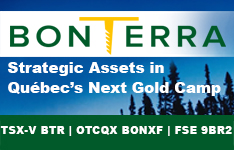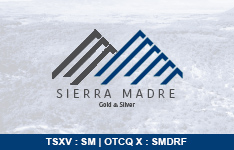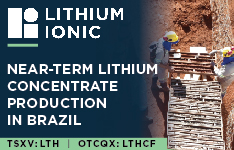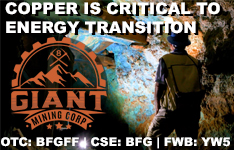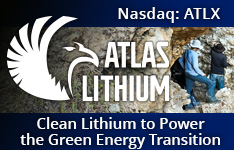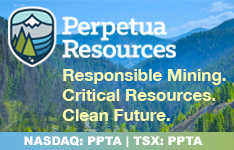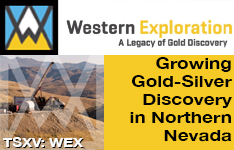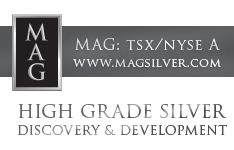On March 5, President Trump signed an executive order creating a Strategic Bitcoin Reserve (SBR). The SBR will be capitalized initially with cryptoassets obtained by the Department of Treasury through criminal and civil asset forfeiture — worth about $6.9 billion.
However, this could just be the start: Treasury Secretary Scott Bessent and Commerce Secretary Howard Lutnick, both well-known Bitcoin bulls, are now authorized to develop budget-neutral strategies for acquiring additional BTC, provided that those strategies impose no incremental costs on American taxpayers.
One bold idea floated by Wyoming Senator Cynthia Lummis is to 'monetize' the gold being held in Fort Knox and swap some of it for Bitcoin. Right now, gold is being held by the U.S. government at "book value" of about $42/oz, the same price as in 1973, a far cry from the approximately $3,000/oz trading price today. Indeed, Treasury Secretary Scott Bessent has said the U.S. will move to monetize its assets which many interpreted as revaluing gold reserves while selling real estate and other assets.
John Maynard Keynes once called gold a 'barborous relic' but its clear that individual investors, institutons and many governments disagree. Gold is on a record -breaking run through $3,000 and has outperformed both the S&P500 and the NASDAQ over the past five years.
Still, despite the dramatic price move, the way most people, and even the U.S. government, buy and store gold is in vaults at banks and other financial institution or under the proverbial mattress (or Fort Knox) , which has not changed much since the days of the horse and buggy.
The gold industry has missed out on the digitally native and newly affluent class of investors who love Bitcoin (and would perhaps love gold if given the chance).
So, gold needs to play a little catch-up. How?
The answer lies in blockchain, the technology behind Bitcoin. Blockchains allow us to program a digital coin or "token" to represent anything of value — stocks, bonds, art, gold — and make them accessible to anyone without the need for intermediaries. Embedded technology like smart contracts can automate functions once handled by brokers, exchanges, and transfer agents, reducing both friction and fees.
The first big application so far for tokens has been U.S. dollars or stablecoins, which have exceeded $200 billion in assets. The next killer app — or asset — may be gold.
Tokenization adds another layer of trust. Worried that the U.S. government is misstating the gold it holds in reserve? If that gold was tokenized, it would be traceable on a blockchain and auditable by anyone, improving trust.
Should the U.S. government look to dump its gold to buy Bitcoin?
We believe that the next generation of financial powerhouses will likely emerge from the tokenization revolution. It's still early, and the playing field is wide open. Matador and others have the bull by the horns.
No. Instead, it should revalue that gold, tokenize it, and expand the SBR to include gold and other tokenized assets. The best part is that the U.S. government can tokenize its gold holdings on the Bitcoin blockchain, the most secure and trustworthy ledger devised, and monetize it by lending it out on chain or using it as collateral to do other kinds of transactions.
Tokenized gold is already a growing market. Tether's U.S dollar stablecoin, USDT, is a juggernaut with $140 billion circulating supply, accounting for 70% of stablecoin market. In January 2020 they launched a gold product XAUt, which has a circulating supply of $650 million, comprising of 41% of the onchain gold market.
Paxos is used by a few traditional enterprises like PayPal, Venmo, and MasterCard. Paxos' PAX Gold (PAXG) was launched in September 2019 and has a circulating supply of $520 million, approximately 33% of the onchain gold market. It is the second largest behind Tether's XAUt.
One public company, Matador Technologies Inc. (MATA:TSX.V; MTDTF:OTCQB), is trying to do something similar. Matador wants to be one of the first public companies focused on tokenizing real-world assets by leveraging the Bitcoin blockchain, starting with gold. Here's how it works, according to the company: investors buy gold digitally through Matador, with each transaction recorded on the Bitcoin blockchain using a digital signature called an ordinal. The Bitcoin blockchain is a secure and decentralized ledger that can be used to record transactions in gold and other assets.
Matador then acquires gold through a partnership with Kitco Metals, sourcing directly from the Canadian Mint, where the gold is custodied. The gold product mixes real gold with digital art, similar to how a commemorative gold coin mixed the scarcity of the precious metal with the scarcity of a limited-edition design. The user has a claim on both the physical gold and the digital art. Matador is backed by UTXO and Hive Digital.
According to Matador CEO Deen Soni, "Tokenizing Fort Knox gold on the blockchain could boost transparency and trust," adding "the owernship of every ounce could be immutably tracked, reducing the potential for discrepencies. This increased visibility would not only bolster public confidence in our reserves but also enable innovative financial mechanisms, such as lending tokenized gold to friendly regimes, generating returns."
Let's take it a step further: why do we spend billions of dollars extracting gold only to bury it again in bank vaults? Resource companies could use secure geological data to identify and prove the size and value of gold deposits and then tokenize them and make available for trading as a gold derivative. NatGold Digital Ltd., for example, is tokenizing gold in the ground and making it available to investors as a compliant token, with the added benefit of meeting ESG standards due to the no-carbon footprint.
The growth of this technology ecosystem around Bitcoin is something I have written about and hoped to see developed since Blockchain Revolution. It just makes sense — Why not use the world's most secure decentralized network to secure the world's largest and oldest store of value asset? Or, for that matter, titles and deeds to property, securities, licenses, contracts, and even votes!
It remains to be seen if Tether, Paxos, or Matador can win in this market. Other players like Polymath and Securitize.io are making inroads in the tokenization of stocks, bonds, and other financial assets, which collectively are known as "security tokens." We believe that the next generation of financial powerhouses will likely emerge from the tokenization revolution. It's still early, and the playing field is wide open. Matador and others have the bull by the horns.
Don Tapscott is author of 16 widely read books about technology in business and society, including the best-seller Blockchain Revolution, which he co-authored with his son Alex. He is Co-Founder of BRI, an Adjunct Professor at INSEAD, Chancellor Emeritus of Trent University in Canada and a Member of the Order of Canada.
| Want to be the first to know about interesting Technology, Special Situations and Gold investment ideas? Sign up to receive the FREE Streetwise Reports' newsletter. | Subscribe |
Important Disclosures:
- Matador Technologies Inc. has a consulting relationship with Street Smart an affiliate of Streetwise Reports. Street Smart Clients pay a monthly consulting fee between US$8,000 and US$20,000.
- As of the date of this article, officers and/or employees of Streetwise Reports LLC (including members of their household) own securities of Matador Technologies Inc. and NatGold Digitial Ltd.
- Don Tapscott: I determined which companies would be included in this article based on my research and understanding of the sector.
- Statements and opinions expressed are the opinions of the author and not of Streetwise Reports, Street Smart, or their officers. The author is wholly responsible for the accuracy of the statements. Streetwise Reports was not paid by the author to publish or syndicate this article. Streetwise Reports requires contributing authors to disclose any shareholdings in, or economic relationships with, companies that they write about. Any disclosures from the author can be found below. Streetwise Reports relies upon the authors to accurately provide this information and Streetwise Reports has no means of verifying its accuracy.
- This article does not constitute investment advice and is not a solicitation for any investment. Streetwise Reports does not render general or specific investment advice and the information on Streetwise Reports should not be considered a recommendation to buy or sell any security. Each reader is encouraged to consult with his or her personal financial adviser and perform their own comprehensive investment research. By opening this page, each reader accepts and agrees to Streetwise Reports' terms of use and full legal disclaimer. Streetwise Reports does not endorse or recommend the business, products, services or securities of any company.
For additional disclosures, please click here.










